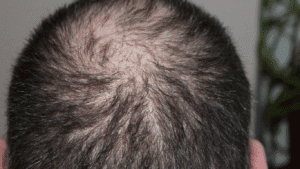Dental crowns are a popular solution for restoring damaged teeth, improving aesthetics, and enhancing oral health. If you’re researching “tooth crown before and after,” you’re likely curious about what to expect from this procedure, how it transforms your smile, and whether it’s the right choice for you. In this comprehensive guide, we’ll explore every aspect of dental crowns, from the reasons they’re needed to the dramatic before-and-after results. Whether you’re dealing with a chipped tooth, decay, or simply want a better smile, this article will provide all the information you need in an easy-to-understand, informational tone.
What Is a Tooth Crown?
A dental crown is a custom-made cap that covers a damaged or weakened tooth. It’s designed to restore the tooth’s shape, size, strength, and appearance. Crowns are typically made from materials like porcelain, ceramic, metal, or a combination of these, depending on your needs and preferences. Dentists recommend crowns for various reasons, such as protecting a weak tooth, restoring a broken one, or improving its overall look.
The “before and after” aspect of a tooth crown refers to the transformation that occurs once the crown is placed. Before the procedure, you might have a tooth that’s cracked, discolored, or misshapen. After the crown is applied, the tooth looks natural, uniform, and healthy. This change can be subtle or dramatic, depending on the condition of the tooth beforehand.
Why Do People Need Dental Crowns?
There are several reasons someone might need a dental crown, and understanding these can help you determine if this treatment is right for you. One common reason is tooth decay. When a cavity becomes too large for a filling to repair, a crown can cover and protect the remaining tooth structure. Another reason is physical damage, such as a crack or chip from an injury or biting down on something hard. Crowns also come into play after a root canal, as the treated tooth often becomes brittle and needs extra support.
Cosmetic concerns are another driving factor. If a tooth is severely discolored or oddly shaped, a crown can give it a more appealing look. Additionally, crowns are used to anchor dental bridges or cover dental implants, making them a versatile solution in restorative dentistry. The “before” state often involves discomfort, insecurity, or functional issues, while the “after” brings relief, confidence, and a fully functional tooth.
Types of Dental Crowns: Materials and Options
When considering a tooth crown, you’ll encounter different material options, each with its own benefits and drawbacks. Porcelain and ceramic crowns are popular for their natural appearance, blending seamlessly with your existing teeth. These are often chosen for front teeth due to their aesthetic appeal. Metal crowns, made from gold or other alloys, are incredibly durable and ideal for molars that endure heavy chewing pressure, though they’re less visually appealing.
Porcelain-fused-to-metal (PFM) crowns combine strength and aesthetics, offering a middle ground. There are also zirconia crowns, known for their toughness and tooth-like color, making them a modern favorite. The choice of material impacts the “before and after” outcome—metal crowns might stand out more in the “after” phase, while porcelain provides a subtle, natural transformation.
Temporary crowns, usually made of acrylic or composite, are another consideration. These are used while your permanent crown is being crafted, giving you a preview of the final result. Knowing the material options helps set realistic expectations for your crown’s appearance and longevity.
The Tooth Crown Procedure: Step-by-Step
Understanding the process behind getting a dental crown can ease any anxiety and clarify the “before and after” journey. The procedure typically spans two visits to the dentist. During the first visit, the dentist examines and prepares the tooth. This involves taking X-rays to assess the tooth’s condition and surrounding bone. If there’s decay or damage, the dentist removes it and reshapes the tooth to make room for the crown.
Next, an impression of your tooth is made using a mold or digital scan. This ensures the crown fits perfectly. A temporary crown is placed to protect the tooth while the permanent one is fabricated in a lab, which can take a couple of weeks. At the second visit, the temporary crown is removed, and the permanent crown is cemented into place. The dentist checks the fit, bite, and color to ensure everything aligns with your natural teeth.
The “before” stage involves a tooth that’s prepped and possibly sensitive, while the “after” reveals a polished, fully restored tooth. The transition might feel strange at first, but most patients adjust quickly.
Tooth Crown Before and After: What to Expect
The most exciting part of getting a crown is the transformation. Before the crown, you might experience pain, sensitivity, or embarrassment about your tooth’s appearance. A cracked or decayed tooth can make chewing uncomfortable and smiling feel awkward. After the crown is placed, these issues typically disappear. The tooth looks natural, blends with your smile, and functions like it should.
Visually, the change depends on the tooth’s initial state. A severely discolored tooth might go from yellow or brown to a bright, uniform shade. A chipped tooth becomes smooth and whole again. Functionally, you’ll notice improved strength and comfort. Many patients report feeling more confident in social situations, as their smile no longer holds them back. The “before and after” difference isn’t just physical—it’s emotional too.
How Long Do Dental Crowns Last?
Durability is a key concern when investing in a dental crown. On average, crowns last between 5 and 15 years, though with proper care, some can last decades. The lifespan depends on factors like the material, your oral hygiene habits, and lifestyle choices. Porcelain crowns might wear down faster than metal ones, especially if you grind your teeth. Habits like chewing ice or smoking can also shorten a crown’s life.
The “before and after” timeline extends beyond the procedure itself. Before, you might not think about maintenance, but after, regular brushing, flossing, and dental checkups become essential to preserve the crown. If a crown eventually wears out or loosens, it can be replaced, starting the transformation cycle again.
Pros and Cons of Dental Crowns
Like any dental treatment, crowns have advantages and limitations. On the plus side, they restore function, protect weak teeth, and enhance appearance. The “after” result often leaves patients thrilled with their improved smile and comfort. Crowns are also customizable, letting you choose a material and shade that suits you.
However, there are downsides. The procedure requires removing some natural tooth structure, which is irreversible. Crowns can be costly, especially if insurance doesn’t cover them, and there’s a small risk of complications like sensitivity or gum irritation. Weighing these factors helps you decide if the “before and after” benefits outweigh the cons for your situation.
Caring for Your Dental Crown
Maintaining your crown is straightforward but crucial for long-term success. Brush twice a day and floss daily to prevent plaque buildup around the crown’s edges, which can lead to decay in the underlying tooth. Avoid hard foods that might crack the crown, and if you grind your teeth at night, consider a mouthguard.
Regular dental visits ensure your crown stays in good shape. The “after” phase of a crown isn’t a one-and-done deal—consistent care keeps the transformation intact. If you notice discomfort or a loose fit, see your dentist promptly to avoid bigger issues.
Tooth Crown Before and After: Real-Life Examples
Seeing real examples can bring the “before and after” concept to life. Imagine a patient with a front tooth chipped from an accident. Before, they cover their mouth when laughing, feeling self-conscious. After a porcelain crown, their smile is seamless, and they beam with confidence. Another case might involve a molar weakened by decay. Before, chewing is painful; after, it’s effortless and pain-free.
These stories highlight the range of outcomes. Some transformations are subtle, like evening out a slightly misshapen tooth, while others are striking, like turning a dark, damaged tooth into a bright, healthy-looking one. Photos online or from your dentist can offer visual proof of what’s possible.
Cost of Dental Crowns: What to Budget For
Cost is a big consideration when exploring tooth crowns. Prices vary widely based on material, location, and dentist expertise. On average, a crown costs between $800 and $1,500 per tooth. Porcelain and zirconia tend to be pricier than metal, and urban areas might charge more than rural ones.
Insurance can offset some expenses if the crown is medically necessary, like after a root canal, but cosmetic crowns are often out-of-pocket. The “before” financial worry shifts to “after” satisfaction once you see the results, but planning ahead ensures no surprises.
Are You a Good Candidate for a Dental Crown?
Not everyone needs a crown, so how do you know if it’s right for you? If you have a tooth that’s cracked, decayed beyond a filling, or structurally weak, you’re likely a candidate. Cosmetic goals, like fixing discoloration or shape, also qualify. However, if the tooth is too damaged to support a crown, an extraction and implant might be better.
Your dentist will assess your oral health to confirm. The “before” uncertainty becomes an “after” clarity once you get a professional opinion tailored to your needs.
Common Questions About Tooth Crowns
Patients often have questions about the “before and after” experience. Does it hurt? The procedure involves local anesthesia, so discomfort is minimal, though some sensitivity might linger afterward. How long does it take? The prep and placement span two visits, with a few weeks in between. Can crowns fail? Yes, but it’s rare with proper care.
These answers address common curiosities, making the process less daunting. The shift from “before” doubts to “after” understanding empowers you to move forward confidently.
Alternatives to Dental Crowns
Crowns aren’t the only option for damaged teeth. Fillings work for smaller cavities, while veneers suit cosmetic fixes like discoloration or minor chips. Inlays and onlays are less invasive for moderate damage, covering only part of the tooth. If a tooth is beyond saving, extraction followed by an implant or bridge might be recommended.
Comparing these to crowns highlights why the “before and after” of a crown might be preferable—its full coverage offers unmatched strength and versatility for many cases.
The Emotional Impact of a Tooth Crown
Beyond the physical change, crowns can transform how you feel. Before, a damaged tooth might make you hesitant to smile or eat certain foods. After, that hesitation fades, replaced by relief and pride in your appearance. This emotional shift is a key part of the “before and after” narrative, often overlooked but deeply felt by patients.
Final Thoughts on Tooth Crown Before and After
The journey from a problematic tooth to a restored one is remarkable. The “before” phase—marked by damage, discomfort, or insecurity—gives way to an “after” of strength, beauty, and confidence. Dental crowns offer a reliable, long-lasting solution for a range of issues, with results that speak for themselves. If you’re considering this treatment, consult your dentist to explore how it could change your smile and your life. The transformation is more than skin-deep—it’s a step toward feeling your best.




